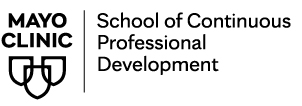Learning Objectives
Upon conclusion of this program, participants should be able to:
- Recognize that the unique embryology and physiology of the bicuspid aortic valve condition results in unique pathologies and complications.
- Identify the common and uncommon bicuspid aortic valve morphologies and their associated potential complications.
- Differentiate typical from complex valvulo-aortopathies in bicuspid aortic valve.
- Generate a suspicion for bicuspid aortic valve thrombus in the evaluation of embolic stroke.
ATTENDANCE / CREDIT
Text the session code (provided only at the session) to 507-200-3010 within 48 hours of the live presentation to record attendance. All learners are encouraged to text attendance regardless of credit needs. This number is only used for receiving text messages related to tracking attendance. Additional tasks to obtain credit may be required based on the specific activity requirements and will be announced accordingly. Swiping your badge will not provide credit; that process is only applicable to meet GME requirements for Residents & Fellows.
TRANSCRIPT
Any credit or attendance awarded from this session will appear on your Transcript.
For disclosure information regarding Mayo Clinic School of Continuous Professional Development accreditation review committee member(s) and staff, please go here to review disclosures.

 Facebook
Facebook X
X LinkedIn
LinkedIn Forward
Forward